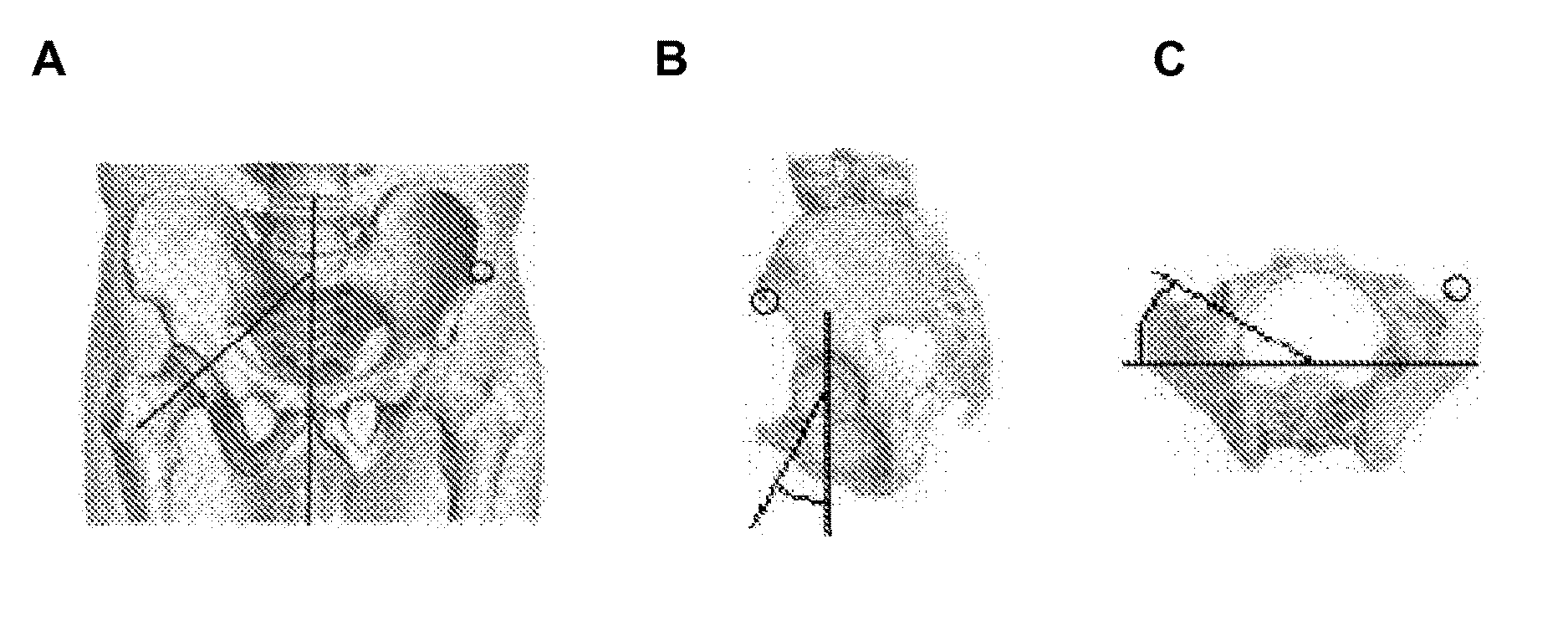System and method for precise prosthesis positioning in hip arthroplasty
a hip arthroplasty and prosthesis technology, applied in the field of hip arthroplasty prosthesis positioning system and hip arthroplasty, can solve the problems of increased risk of intra-operative and post-operative complications, insufficient biomechanics of the joint, and inability to function properly, so as to improve the standard and quality of hip arthroplasty. , the effect of high accuracy and sensitivity
- Summary
- Abstract
- Description
- Claims
- Application Information
AI Technical Summary
Benefits of technology
Problems solved by technology
Method used
Image
Examples
Embodiment Construction
[0138]The instant invention includes a novel apparatus, as well as a unique methodology and system, to measure, calculate, and monitor alignment and leg length for precise intra-operative placement and positioning of prostheses, particularly with respect to avoiding acetabular and femoral prosthetic implant malpositioning and leg length discrepancy.
[0139]The apparatus of the invention is comprised of multiple digital position, angle, and distance sensors as well as especially designed software. Together the sensors and software electronically measure or calculate:
[0140](1) the bony pelvis' position while lying on the operating table during surgery by using the geometric planes and magnetic field as anatomical reference points. The electronic apparatus is placed and secured in the pelvic axis of the patient and provides accurate and precise measurements of pelvic tilt;
[0141](2) the angles of inclination and forward flexion of the acetabulum before and while being prepared and the ace...
PUM
 Login to View More
Login to View More Abstract
Description
Claims
Application Information
 Login to View More
Login to View More - R&D
- Intellectual Property
- Life Sciences
- Materials
- Tech Scout
- Unparalleled Data Quality
- Higher Quality Content
- 60% Fewer Hallucinations
Browse by: Latest US Patents, China's latest patents, Technical Efficacy Thesaurus, Application Domain, Technology Topic, Popular Technical Reports.
© 2025 PatSnap. All rights reserved.Legal|Privacy policy|Modern Slavery Act Transparency Statement|Sitemap|About US| Contact US: help@patsnap.com



